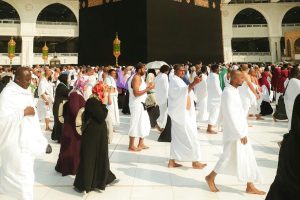HAJJ: THE SACRED PILGRIMAGE OF ISLAM

Hajj is the fifth pillar of Islam and a once-in-a-lifetime obligation for every Muslim who is physically and financially able. Performed annually in the month of Dhul-Hijjah, it draws millions of believers from every corner of the globe to the holy city of Makkah. Though its rites have remained unchanged since the time of Prophet Ibrahim (Abraham) and Prophet Muhammad (peace be upon them), Hajj continues to transform the hearts of pilgrims in every generation.
THE ESSENCE OF HAJJ
At its core, Hajj is a journey of devotion and surrender. Pilgrims leave behind comfort, status, and routine to stand before Allah as equals. The simple white garments of ihram symbolize purity and unity, reminding each pilgrim that all worldly differences disappear in the presence of the Creator.
MAJOR RITES
Ihram: Entering a state of spiritual purity and wearing the unstitched white garments.
Tawaf: Circling the Ka‘bah seven times as an act of worship and unity.
Sa‘i: Walking between the hills of Safa and Marwah, commemorating Hajar’s search for water.
Standing at Arafat: The spiritual peak of Hajj, where pilgrims spend the day in prayer and reflection.
Muzdalifah and Stoning the Jamarat: Collecting pebbles and symbolically rejecting evil by stoning the pillars at Mina.
Sacrifice and Eid al-Adha: Offering an animal sacrifice to honor the obedience of Prophet Ibrahim and to share blessings with the needy.
SPIRITUAL IMPACT
Hajj is more than a physical journey; it is a profound inner transformation. Pilgrims return home with a renewed sense of humility, forgiveness, and closeness to Allah. The experience erases social distinctions, strengthens faith, and reminds every believer of life’s ultimate purpose submission to the will of God.
Conclusion
Hajj stands as a timeless call to faith, unity, and self-purification. By completing this sacred pilgrimage, Muslims around the world reaffirm their covenant with Allah and carry its lessons of devotion, equality, and compassion into their everyday lives.

